Get PeakVisor App
Sign In
Search by GPS coordinates
- Latitude
- ° ' ''
- Longitude
- ° ' ''
- Units of Length

Yes
Cancel
Share ×

Scan the QR code and open PeakVisor on your phone
❤ Wishlist ×
Choose
Delete
The Peace River Regional District is an administrative district located in northern British Columbia, Canada. It encompasses the Muskwa and Hart Ranges of the northern Rockies as well as part of the Omineca and Cassiar Mountains. There are 456 named peaks in the district, of which the ultra-prominent Ulysses Mountain is the tallest and most prominent with 3,024 m (9,921 ft) of elevation and 2,285 m (7,497 ft) of prominence.
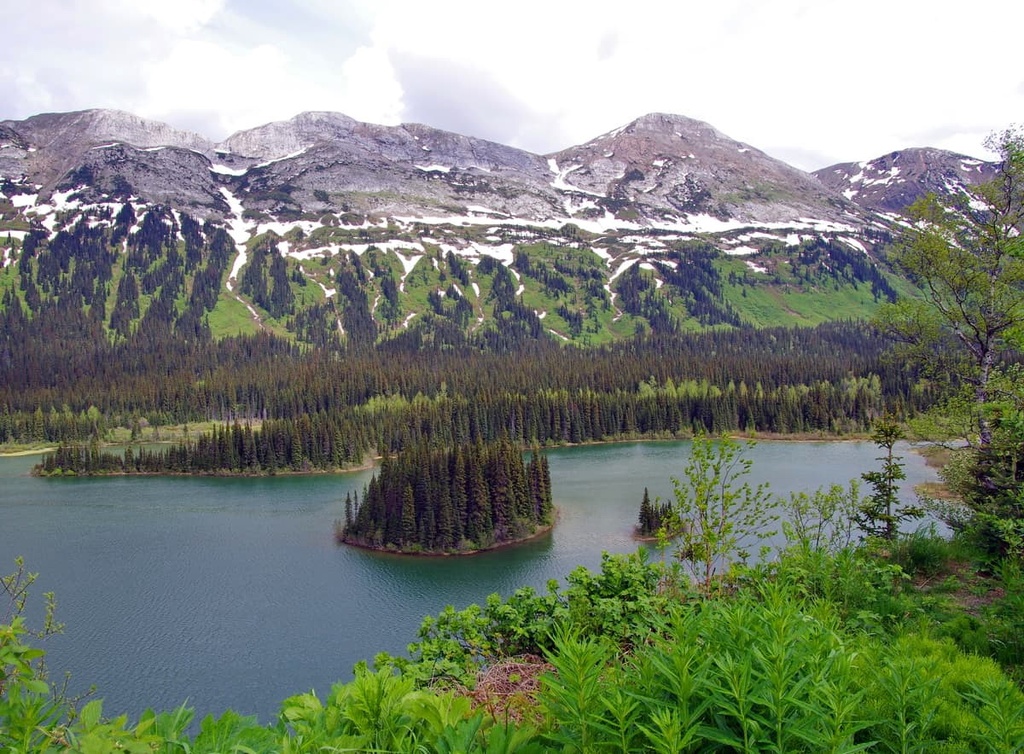
Located in northeastern British Columbia, Canada, the Peace River Regional District is centered around the Peace River, which is located to the west of the province’s border with Alberta. The district encompasses the Hart and Muskwa Ranges of the northern Rockies as well as part of the Cassiar and Omineca Mountains.
The Peace River Regional District includes many remote wilderness areas. It is primarily accessible from Highway 97. Fort St. John and Dawson Creek are the major cities in the district while Tumbler Ridge, Chetwynd, Taylor, and Hudson’s Hope are some of the other municipalities.
Many areas of the region’s wilderness area are protected as part of provincial parks. The following are some of the provincial parks in the Peace River Regional District:
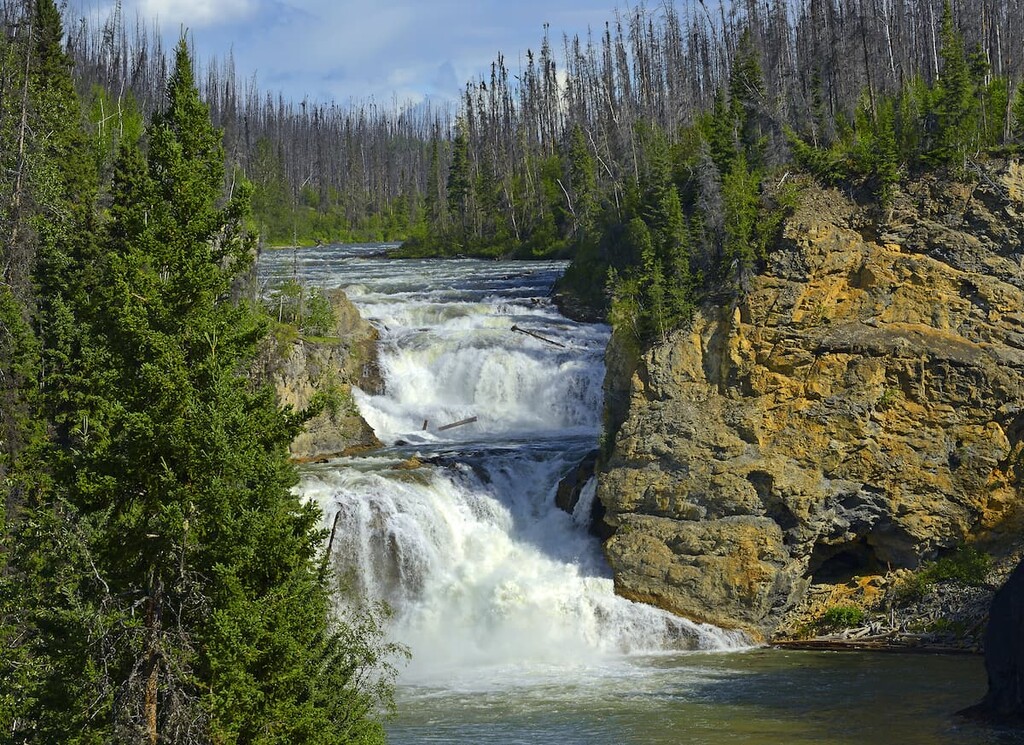
The Peace River Regional District encompasses parts of the Muskwa and Hart Ranges of the Far Northern Rockies, part of the Omineca Mountains, and the southern end of the Cassiar Mountains. The region can be divided geologically into two units, with the northern Rockies representing one unit, and the Omineca and Cassiar Mountains representing the other.

The Omineca and Cassiar Mountains are structurally and geologically the same range. The Peace River Regional District encompasses only parts of each of the Cassiar Mountains and Omineca Mountains.
The major subranges of the Omineca Mountains that are found in the district are the Swanell and Oslinka Ranges. These two ranges contain further subranges, such as the McConnell Range, Wrede Range, Tucha Range, Fishing Range, Russel Range, Butler Range, Wolverine Range.
Meanwhile, the subranges of the Cassiar Mountains in the district include the Tatlatui Range, Samuel Black Range, Metsantan Range, Sifton Ranges, and the Thudaka Range.

The Omineca and Cassiar Mountains have a core of granite rock that is known as the Omineca Intrusions. During the Jurassic and Cretaceous, magma flowed through the Earth’s crust along fault lines to create granitic batholiths in the region.
The magma intruded into sedimentary, volcanic, and metamorphic rocks that were created between the Proterozoic and Jurassic. The volcanic intrusions were the result of the collision and subsequent subduction of the tectonic plates under the Pacific and the western edge of North America. The subduction of the Pacific plates and the formation of the Omineca and Cassiar Mountains occurred about 180 million years ago.
During the Pleistocene, the Cordilleran ice sheet and glaciers covered most of western Canada and significantly impacted the topography of the mountain ranges. The Omineca and Cassiar Mountains’ peaks and ridges experienced different levels of erosion depending on their elevation.
The peaks below 1,830 m (6,000 ft) are generally smooth rounded over, as they were covered by ice, while the peaks are more rugged at higher elevations where the ice sheet didn’t reach. The glaciers created significant U-shaped and hanging valleys throughout the ranges and the tallest peaks in the range continue to show the effects of cirque glaciation.
The oldest rocks of the northern Rockies started forming as marine sediment about 500 million years ago. Meanwhile, the majority of the limestone and quartzite rocks in the region formed about 380 million years ago as marine sediment being deposited along the west coast of what is now Canada.

The Canadian Rockies started forming about 75 million years ago as a result of the subduction of Pacific tectonic plates under the west coast of the continent. Oceanic plates subduct beneath the continental plates because the oceanic plates are denser than the continental plates.
During the collision and subduction of the tectonic plates, pressure built up in the layers of rock. With enough pressure, the layers cracked and became displaced in a process called thrust faulting. During this time, Paleozoic limestone was thrust northeast and on top of younger layers of Cretaceous sandstone and shale.
Where most of the Rockies in the region consist of limestone, the Misinchinka Range, which is a subrange of the Hart Ranges, and a part of Muskwa Ranges are composed of schist. Schist is the result of metamorphosed mudstone or shale.
The schist mountains in the range are softer than their limestone counterparts. As such, the schist mountains in the Far Northern Rockies are more heavily eroded than their neighboring limestone peaks.
As the glaciers grew during the Pleistocene to create the cordilleran ice sheet, the terrain was eroded to create the topography that we see today. In addition to the contiguous ice sheet, alpine and cirque glaciers created localized topography as they scoured alpine valleys and carved the sides of the peaks.
In the Muskwa Ranges, most of the glaciers formed among the tallest grouping of mountains around Mount Roosevelt and as far south as Mount Lloyd George. Valley glaciers flowed from these mountains to create the Gataga, Racing, Muskwa, and Kwadacha River valleys.
Some interesting features of the northern Rockies are that they are covered with a near-universal veneer of glacial drift, even though the Muskwa Ranges don’t otherwise show evidence of glaciation.
Additionally, The Hart Ranges are lower in elevation and more subdued topographically than the surrounding ranges because they have a different stratigraphy and rock structure. Furthermore, the ranges contain significant karst formations, such as the caves at Bocock Peak Provincial Park.
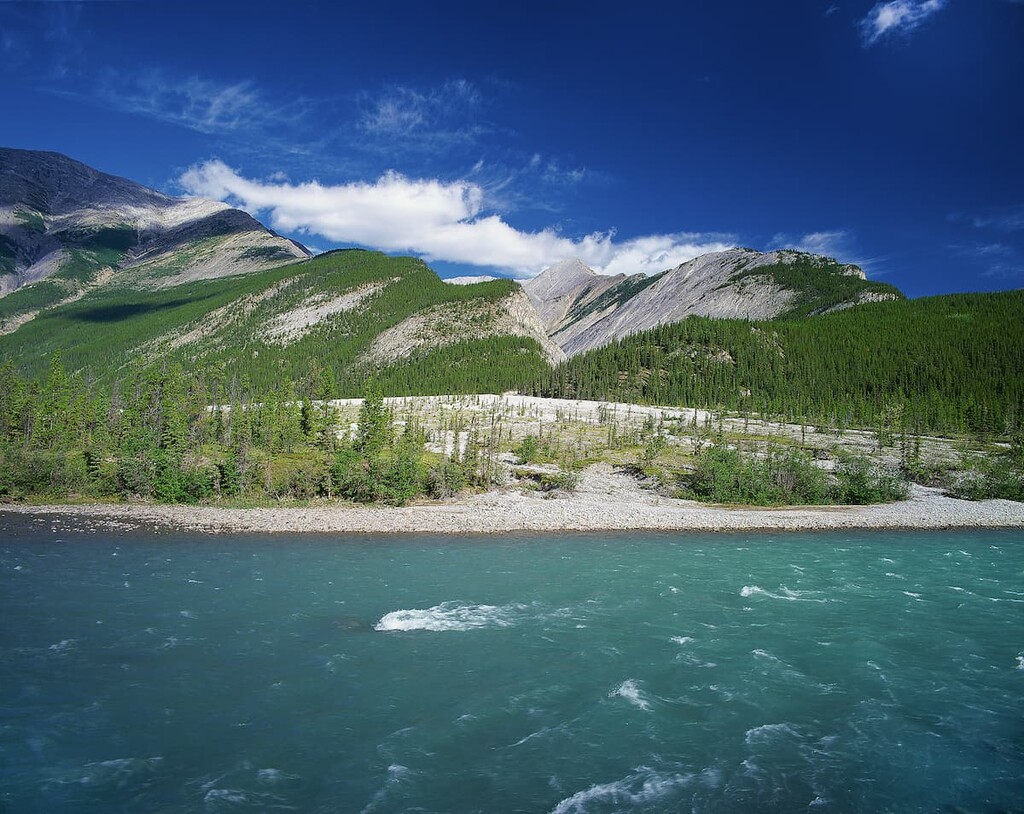
The ecology of the Peace River Regional District is representative of several different ecological zones. However, the northern and southern parts of the district have noticeable differences in their representative ecologies.
The region’s entire alpine region is representative of the Boreal Altai Fescue Alpine. Additionally, the northern subalpine is part of the Spruce-Willow-Birch Zone and the southern region is part of the Engelmann Spruce-Subalpine Fir Zone. The northern flatlands are covered in the Boreal White and Black Spruce ecology while the southern plateaus and valleys are represented by the Sub-Boreal Spruce Zone.
The alpine of the Peace River Regional District is either rocky and barren, covered by glaciers, or dominated by a thin, windblown snowpack. Grasses, such as Altai fescue and small-awned sedge grow in scattered clumps among the rocks and form alpine meadows below the region’s rocky peaks. Dwarf shrubs and krummholz can grow only in protected areas. As a result, very few animals inhabit the alpine.

Mountain goats, stone sheep, hoary marmots, and Columbian ground squirrels tend to be the only mammals that inhabit the alpine year-round. The goats and sheep take refuge on steep, south-facing cliffs and rocky outcrops during the winter, while the marmots and ground squirrels retreat to their burrows beneath the alpine rocks and snow.
The northern ecology of the Peace River Regional District is characterized by the Spruce-Willow-Birch zone in the subalpine and the Boreal White and Black Spruce in the flatlands. The Spruce-Willow-Birch Zone is home to some of the harshest weather in the province with the coldest, longest winters and the shortest, coolest summers.
With a climate and terrain that are typically unsuitable for human habitation, this zone has beautiful wilderness and abundant wildlife that make it ideal for many recreational activities. The region is home to steep mountains that are covered with forests of subalpine fir, spruce, and lodgepole pine, the latter of which only grows at lower elevations in the region.
The southern slopes and valley bottoms are the warmest areas of the zone and, as such, may have stands of trembling aspen. Altai fescue and other grasses commonly grow in the area, as do scrub birch and several species of willow.
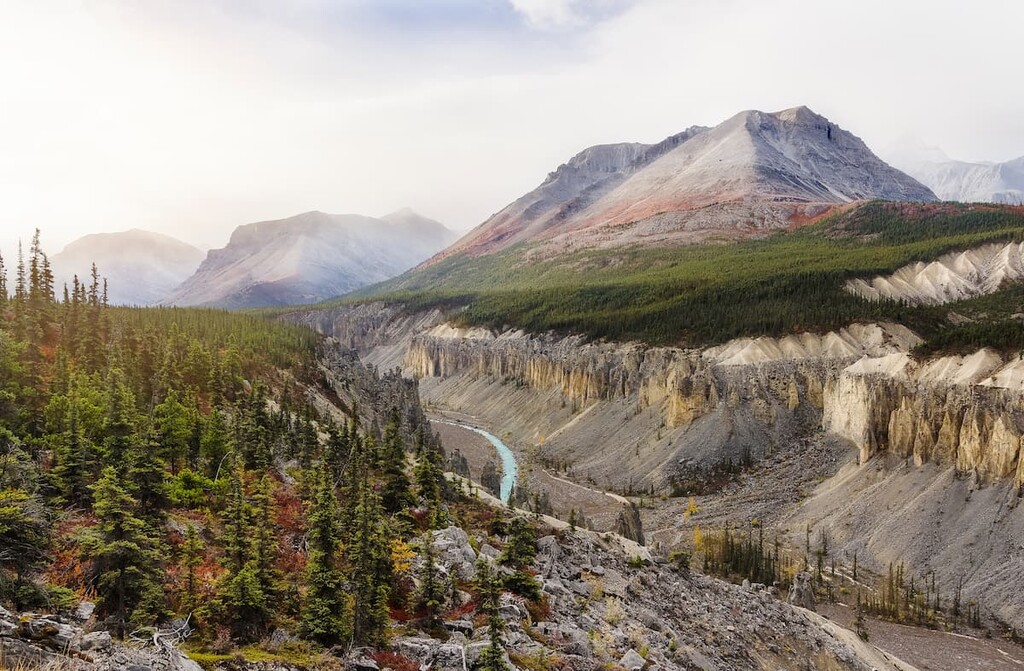
Rocky Mountain elk and mule deer tend to stay on the eastern side of the Rockies in the foothills where the snowfall tends to be less frequent than in the rest of the region. Moose and caribou are widespread in the region; however, even they may leave the region by mid-winter in search of better grazing.
Robust and hardy birds such as the common raven, gray jay, and the boreal chickadee live in the harsh northern climate. Such birds will survive the harsh winters by foraging for seeds or carrion. While there are no reptiles in the zone, there are several amphibians, such as the western toad, wood frog, and spotted frog, that burrow underground and hibernate during the winter.
Extending from the northern Rockies, through the foothills and eastward across a rolling landscape of the Peace River Regional District is the Boreal White and Black Spruce ecology. The typical landscape of this zone is dominated by white spruce and trembling aspen stands along with black spruce bogs. Forest fires here also tend to create large successional forests of lodgepole pine and aspen.
The ecology of the Boreal White and Black Spruce zone forms the stereotypical images of Canada, with its unspoiled wilderness of spruce forests and muskeg dominating the landscape. Moose, bears, caribou, wolves, black flies, and mosquitoes are all plentiful in this area.
The southern half of the Peace River Regional District has the Sub-Boreal Spruce ecology in the valleys and on the plateaus. Meanwhile, the Engelmann Spruce-Subalpine Fir ecology dominates the mountain slopes. The climate of the regions is that of relatively warm summers; however, the winters are cold with typically deep snow.
From the base of the mountain ranges, extending across the plains and plateaus of the southern half of the Peace River Regional District is the Sub-Boreal Spruce ecology. Here, dense forests and an abundance of wildlife are typical of the sub-boreal forests, which are filled with hybrid white spruce, subalpine fir, and black spruce. However, Douglas fir may grow in the drier areas of the region.
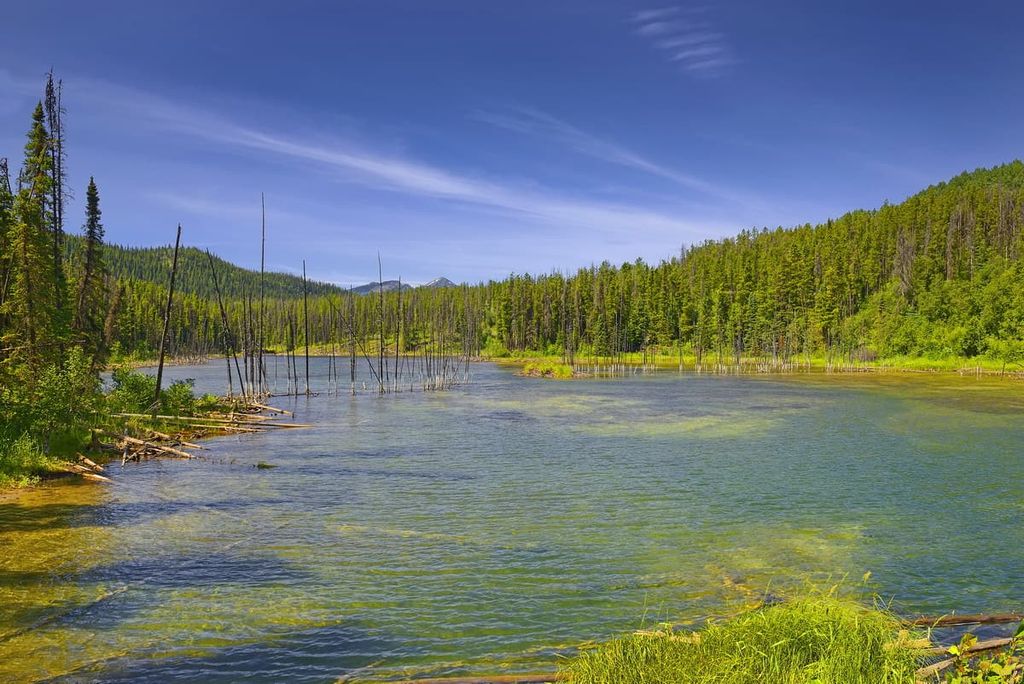
As the lowlands transition to the mountain slopes, the forests change, such that Engelmann spruce becomes the dominant tree in the canopy with an understory of subalpine fir. Like the northern forests, lodgepole pine is still typically the first tree to grow after forest fires burn the old growth forests.
The forests of Engelmann spruce give way to hardier subalpine fir at the higher elevations, until the conditions become too harsh for any trees to grow. The animals of the northern forests of the Peace River Regional District also live in the south; however, bighorn sheep and mule deer are more common in this area.
The Peace River Regional District is the traditional territory of the Dakelh, Tse’kene, Métis, Denédah, and Secwépemc First Nations. There is archaeological evidence and cultural knowledge that the region was home to humans as far back as 9,000 years ago.
The end of the eighteenth century saw the travels of Alexander Mackenzie into the region. In 1808, Simon Fraser established a camp near the region as he prepared to travel the Fraser River to its outlet at the Pacific Ocean.
In 1861, gold was discovered in the Omineca Mountains; however, the gold rush didn’t start until 1869 and lasted about five years.
There is also evidence of the attempts of prospectors attempting to find a short passage through northeastern British Columbia during the 1898 Yukon gold rush. Significant survey expeditions of the northern Rockies began in 1893 when R.G. McConnell worked for the Geological Survey of Canada.
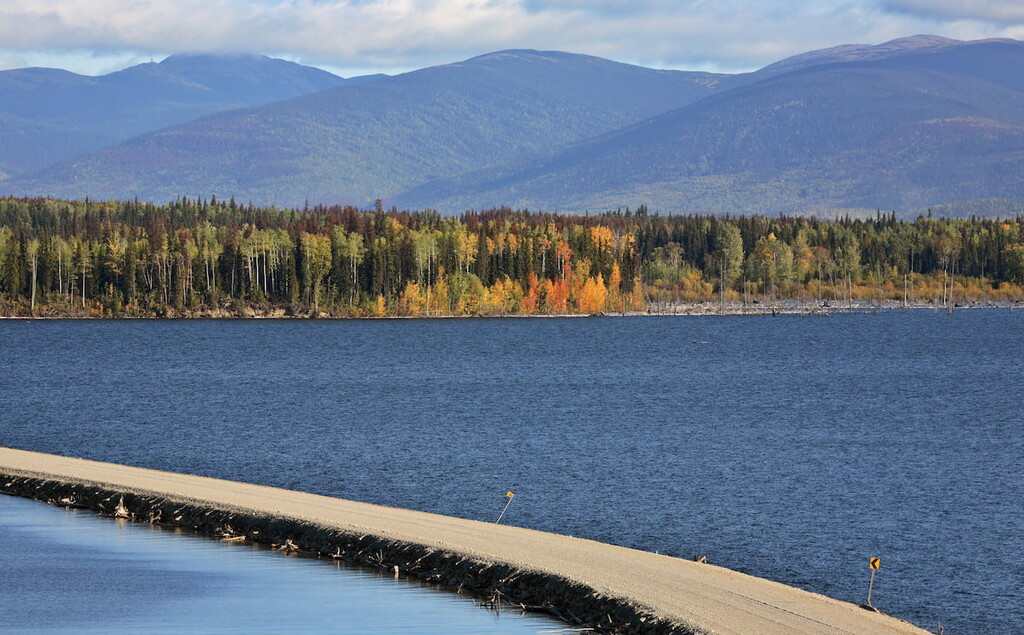
Many of the Métis that settled in the area at the beginning of the twentieth century are descendants of Scottish and French traders as well as Iroquois, Beaver, Chippewa, and Sekani First Nations. Some Métis settled in the Athabasca Valley but moved north near what is now Grande Cache, during the Jasper Exodus, which was the eviction of settlers from what is now Jasper National Park.
While the fur trade brought a time of relative prosperity to some of the First Nations, the traders also brought smallpox and measles. There were many pandemics throughout the nineteenth century that killed large numbers of people, often wiping out entire First Nations and Métis communities.
In 1931, Mary Henry began her first expedition into the northern Rockies to document plants. She was searching for the “tropical valley” that she had heard about from trappers of the area. Mount Mary Henry was named for her to honour her part in the recent history of the region.
Prior to 1942, there were no significant roads into or through the northern Rockies; however, during the 1940s, construction began on the Alaska Highway. Before this time, the area was difficult to access. In fact, the residents of the region and those that decided to travel into the area had to travel by foot, horse, boat, or plane before the establishment of the highway.
The rivers were part of the traditional transportation routes in the region, as was the Davie Trail, which followed part of the Rocky Mountain Trench. The construction of the Alaska Highway spurred the development of the region to its current level and trapping still provides the livelihood for many residents of the area, as does forestry and mining.
The Peace River Regional District has vast stretches of pristine wilderness filled with dense forests, scenic mountain landscapes, waterfalls, karst formations, stunning lakes, glaciers, tarn, and alpine meadows. The region is full of opportunities for excursions and adventures. The following are some of the major hiking and recreational areas:
Tucked into the Hart Ranges of the Peace River Regional District is Monkman Provincial Park. This park has several unique features that make the park a worthwhile backcountry destination. Some of the incredible features found in the park include Kinuseo Falls, the Monkman Cascades, and the Stone Corral. Here are some of the best places to check out:
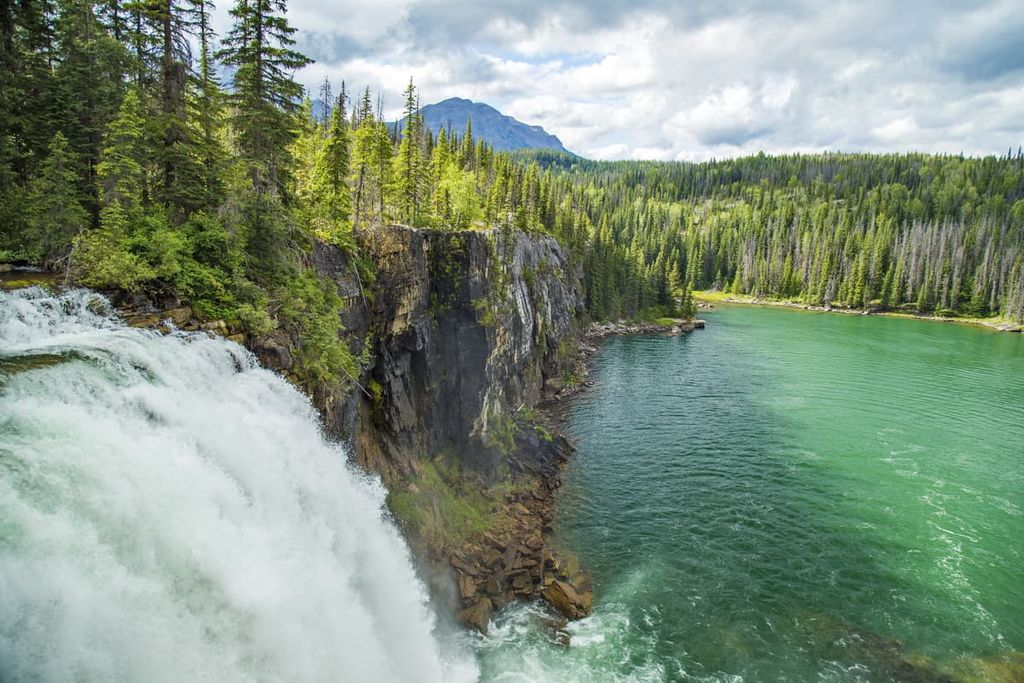
With a distance over 13 km (8 mi), the trail along Butler Ridge presents amazing views of the Rocky Mountains, the Peace River, and Williston Lake. The trail climbs 753 m (2,470 ft); however, the views from the ridge are worth the effort of the steep hike.
Located at the south end of the Muskwa Ranges on the north of Williston Lake’s Peace Reach, Butler Ridge Provincial Park offers boating, fishing, hiking, and wildlife viewing opportunities. The park provides boat access to British Columbia’s largest man-made lake; however, the jewel of the park is the hiking trail that runs along the 15 km (9 mi) Butler Ridge.
Wapiti Lake Provincial Park is located in the Hart Ranges of the Canadian Rockies, with clear lakes, fast rivers, and stunning mountain scenery. The park offers opportunities for canoeing, kayaking, fishing, wildlife viewing, and hiking or cross-country skiing the Wapiti Onion Trail.
The 36 km (22 mi) out-and-back Wapiti Onion Trail is the main trail in Wapiti Lake Provincial Park. The trail follows the incredibly scenic Wapiti River to the cabin at Wapiti Lake. The trail is scenic and provides an incredible wilderness experience. Further adventures can be found in the valleys surrounding Wapiti Lake among the slopes of Wapitik Mountain, Bertram Peak, and Mount Becker.
Kakwa Provincial Park is part of the first interprovincial park with Alberta, combining with Kakwa Wildland Provincial Park and the Willmore Wilderness Park in Alberta to form the Kakwa-Willmore Interprovincial Park. The park is located along the Continental Divide and it features glaciated mountain peaks, extensive alpine meadows, and numerous rivers and lakes.
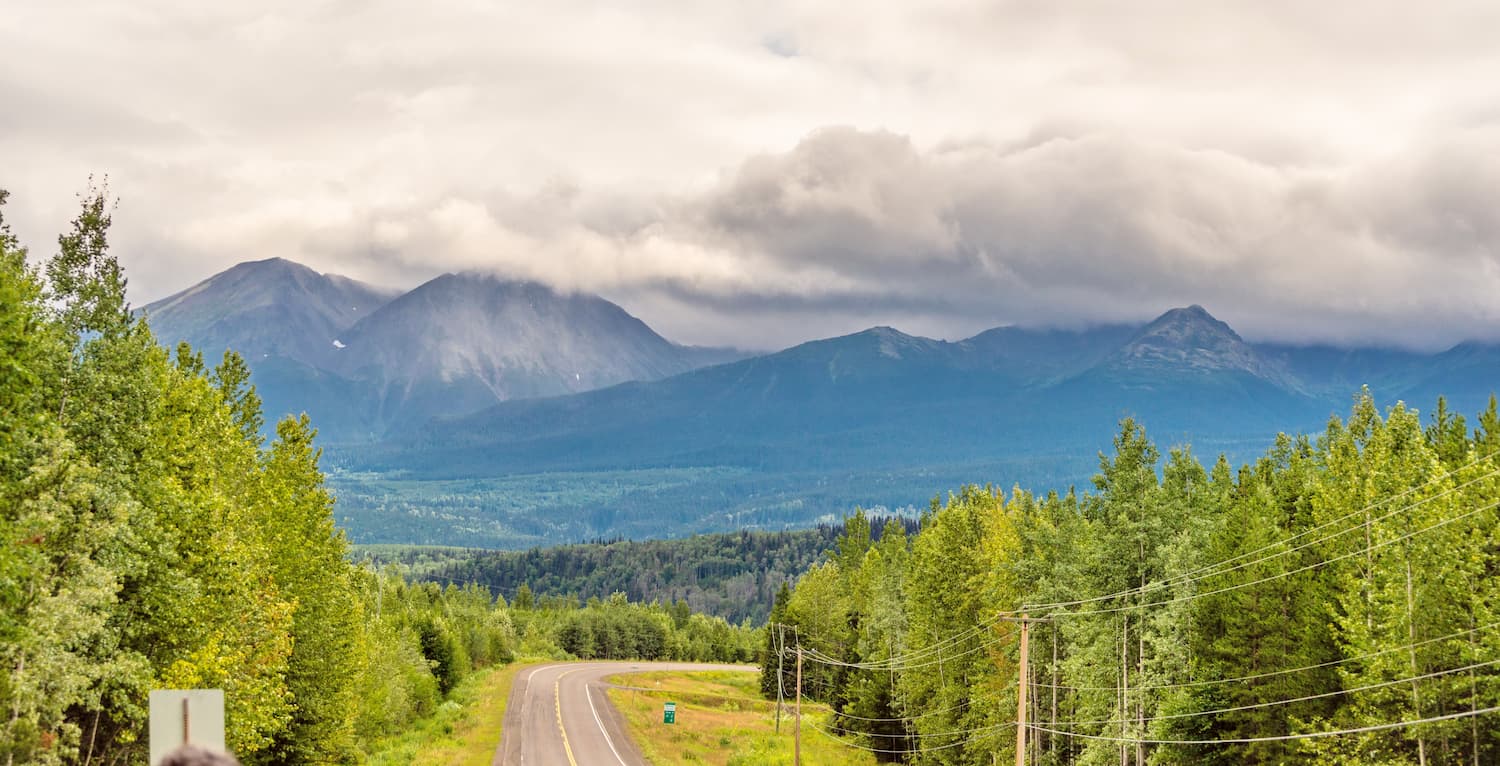
There is one main trail that leads into Kakwa Provincial Park and ends at a public cabin on the shores of Kakwa Lake. Within the park, there are dozens of named peaks, such as the massive Mount Sir Alexander and Mount Ida.
There are many unofficial and unmaintained trails through that park that lead through the beautiful wilderness. Additionally, there are many opportunities for climbing and mountaineering in the park; however, there are no officially marked routes.
Pine Le Moray Provincial Park is located on the west side of the Hart Ranges, where Highway 97 turns from a north-south highway to an east-west highway. While there are no official hiking trails in the park, there is a vehicle-access campground as well as two unofficial peak trails.
There are a number of trails in the park that begin from Highway 97, on the west side of the park. One notable trail is an 8.4 km (5 mi) out and back hike to the top of Mount Murray via Pine Pass. A lodge was built at Pine Pass in 1945 to accommodate travellers and highway workers who were upgrading HIghway 97. With the paved road, skiing and backcountry travel became popular activities in the pine pass area.
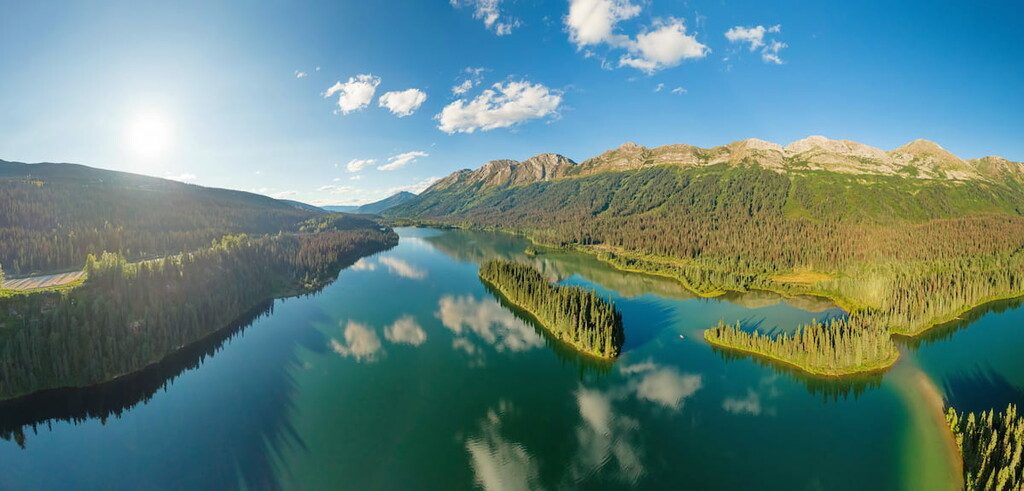
To accommodate the visitors, a campground was constructed at Hart Lake. The other popular hike is to the ridge of the Murray Range. While it is not even 2.5 km (1.5) mi to the summit, it is a gruelling and steep hike; however, the views of the Murray Range and the surrounding Hart Ranges make the trip worthwhile.
The remote Peace River Regional District has a small population that is spread out across the region. Some of the area only became accessible by vehicle after the construction of the Alaska Highway in 1942. The following are the cities and major service centers across the Peace River Regional District.
St. John is the largest city in the Peace River Regional District. It is located at Mile 47 of the Alaska Highway. The community was originally established as a trading post for the fur trade in 1794, a year after Alexander Mackenzie traveled to the region.
The wilderness and mountains that surround Fort St. John have abundant wildlife, scenic landscapes, wild rivers and creeks, trails to follow, and wilderness to explore. While natural resources are an important industry in the region, wilderness travel and adventure tourism are also popular.
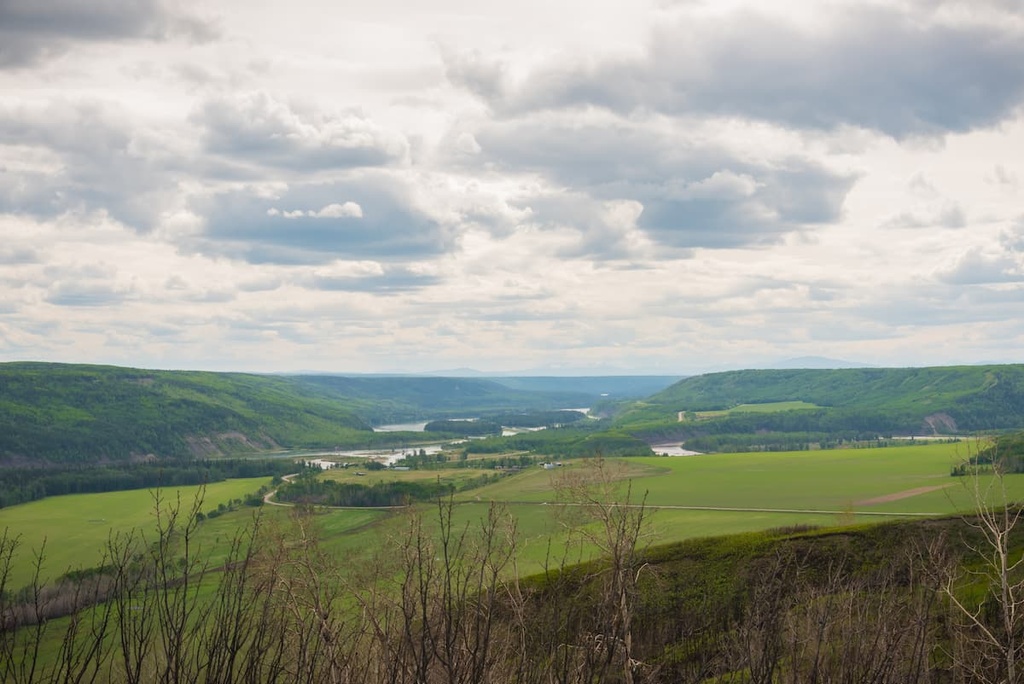
Major attractions in the city include the Charlie Lake Caves, which have evidence of human inhabitants from 10,500 years ago. Visitors can also check out trails like the Willow Loop, Cactus Trails, and the Cecil Lake Highway Trail Loop. From the trails, there is a vast northern wilderness to explore.
Located on the east side of the Peace River Regional District, near the Alberta border, the city Dawson Creek was established as settlers came to the region for the homestead grants that were offered by the government of Canada during the late nineteenth and early twentieth centuries.
As railways were built to the town, it grew and attracted more businesses and settlers. During the twentieth century, Dawson Creek saw some excitement as the United States used the city as a terminus for the Alaska Highway.
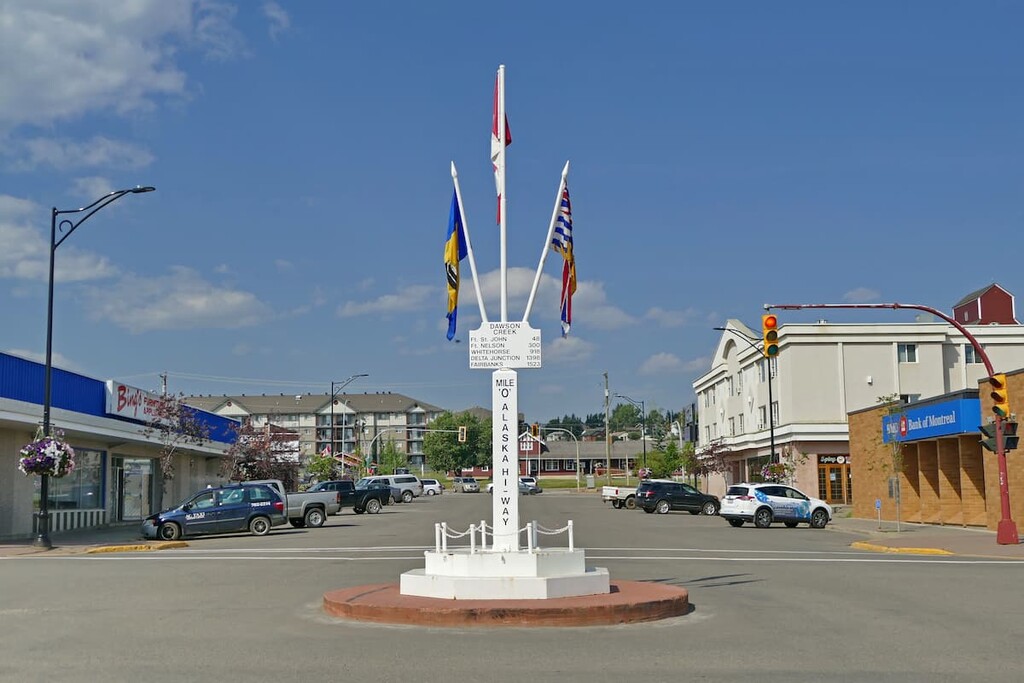
Growth slowed in the 1960s as industrial development moved to nearby Fort St. John and Grande Prairie, Alberta became a commercial hub. Nevertheless, the area surrounding Dawson Creek has beautiful wilderness areas that are great for hiking, skiing, and OHV use. In addition to wilderness access, the city has an art gallery, a historical village, a museum, as well as annual fall fairs and a rodeo.
Some of the popular hikes around the city of Dawson Creek are the casual 1.8 km (1 mi) Loeppky Park Trail and the 9.7 km (5.8 mi) Dawson Creek Trail. There is also a moderate 7.4 km (4.4 mi) hike along the Rim Rocks Trail.
Prince George is located at the junction of Highways 16 and 97 to the south of the Peace River Regional District. However, Prince George is considered the capital of northern British Columbia, and it is the major service and transportation center for the north. It features fine dining restaurants, cinemas, museums, a range of accommodation options, and an international airport.
Some of the most popular hikes around the city are the Cottonwoods Island Loop, the Greenway Trail to Shane Lake Loop, McMillan Creek Loop, Troll Lake, Kakwa Lake Trail, and Forests for the World Lookout.
In addition to hiking, off-roading is a popular pastime of locals in the region. There are well-established clubs and areas to practice motocross and drive OHVs near the city. Fishing, canoeing, hunting, and winter activities such as snowmobiling, snowshoeing, and backcountry skiing, are also popular regional activities.
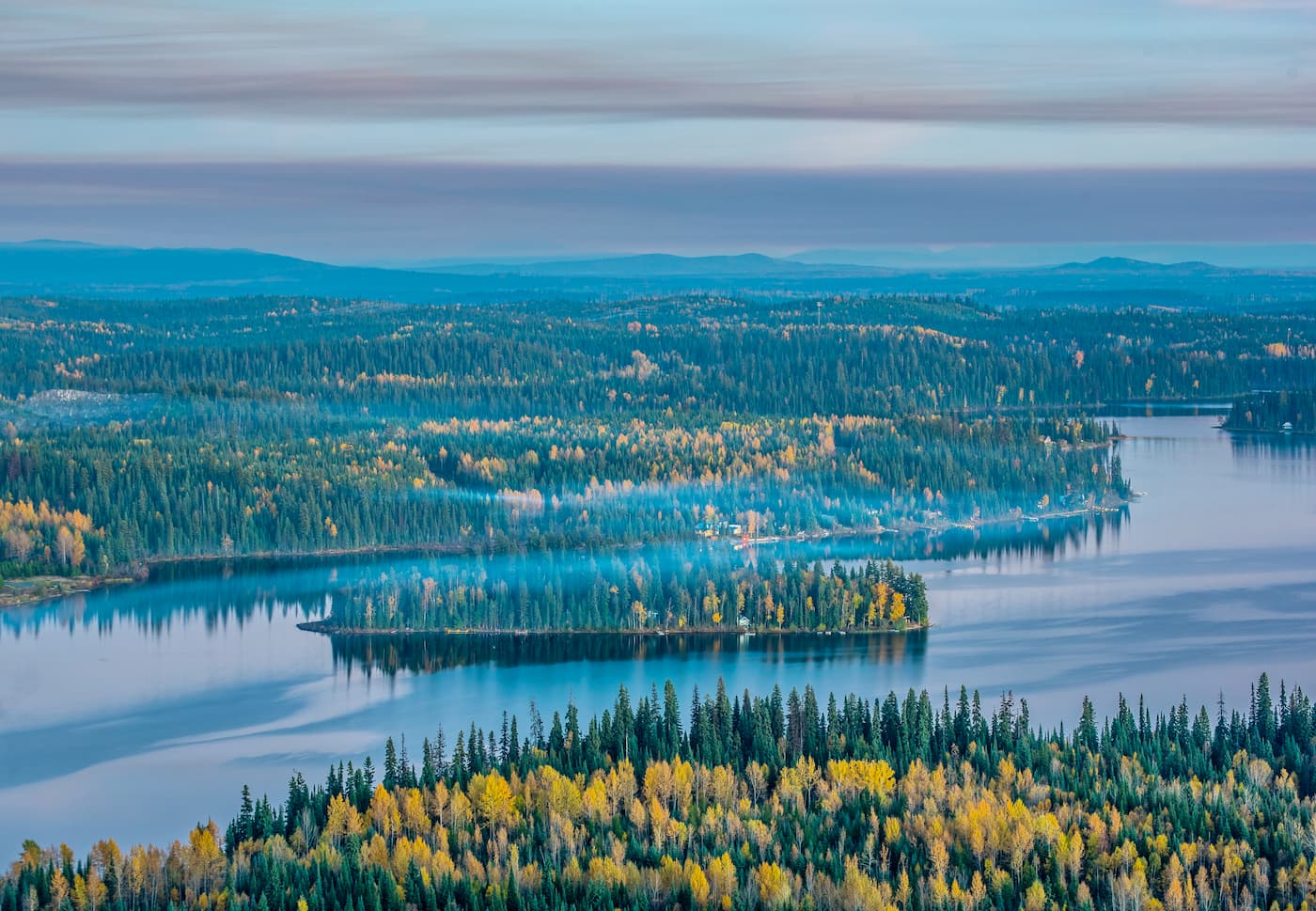
Explore Peace River Regional District with the PeakVisor 3D Map and identify its summits.




